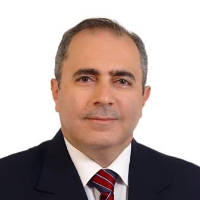
Farah Association for Child with Kidney Disease in Syria, Syria
Abstract:
Background and objectives: Steroid-resistant nephrotic syndrome (SRNS) is a rare kidney disease involving either
immune-mediated or genetic alterations of podocyte structure and function. The rare nature, heterogeneity,
and slow evolution of the disorder are major obstacles to systematic genotype-phenotype, intervention, and
outcome studies, hampering the development of evidence-based diagnostic and therapeutic concepts. To
overcome these limitations, the PodoNet Consortium has created an international registry for congenital
nephrotic syndrome (CNS) and childhood-onset SRNS.
Methods: Since Aug. of 2009 to Oct. 2021, clinical, biochemical, genetic, and histopathologic information was collected both retrospectively and prospectively from 2671 patients with childhood-onset (Age ≤20years old) SRNS, CNS, or persistent sub-nephrotic proteinuria of likely genetic origin at 81 centers in 32 countries through an online portal.
Results: SRNS manifested in the first 5 years of life in 64% of the patients. CNS accounted for 6% of all patients. Extrarenal abnormalities were reported in 17% of patients. The most common histopathologic diagnoses were FSGS (56%), minimal change nephropathy (21%), and mesangioproliferative GN (12%). Mutation screening was performed in 1174 patients, and a genetic disease cause was identified in 23.6% of the screened patients. Among 14 genes with reported mutations, abnormalities in NPHS2 (n=138), WT1 (n=48), and NPHS1 (n=41) were most commonly identified. The proportion of patients with a genetic disease cause decreased with increasing manifestation age: from 66%in CNS to 15%–16% in schoolchildren and adolescents. Among various intensified immunosuppressive therapy protocols, calcineurin inhibitors and rituximab yielded consistently high response rates, with 40%–45% of patients achieving complete remission. Confirmation of a genetic diagnosis but not the histopathologic disease type was strongly predictive of intensified immunosuppressive therapy responsiveness. Post-transplant disease recurrence was noted in 25.8% of patients without compared with 4.5% (n=4) of patients with a genetic diagnosis.
Conclusions The PodoNet cohort may serve as a source of reference for future clinical and genetic research in this rare but significant kidney disease.
Biography:
Dr. Mohamad Bassam Saeed is a renowned Consultant Pediatric Nephrologist and the Founder and President of the Farah Association for Child with Kidney Disease in Syria. He established Syria’s first Pediatric Nephrology Department, Pediatric Dialysis Unit, and Pediatric Kidney Transplant Program. A past president of the Middle East Society for Organ Transplantation (MESOT), he has contributed extensively to nephrology education and research. Dr. Saeed is a member of multiple international nephrology and transplantation organizations, has over 50 peer-reviewed publications, and serves as an editorial board member and reviewer for various journals. His work has significantly advanced pediatric nephrology in the region.
